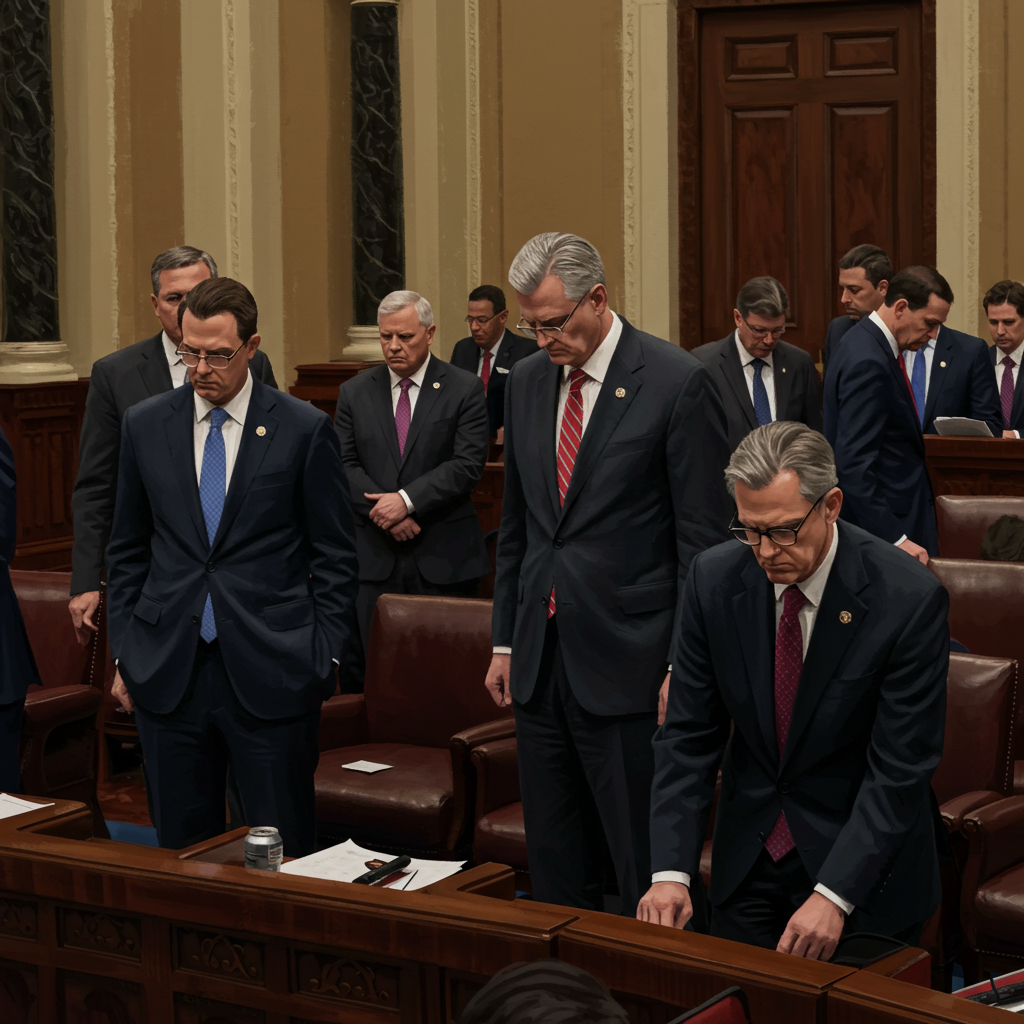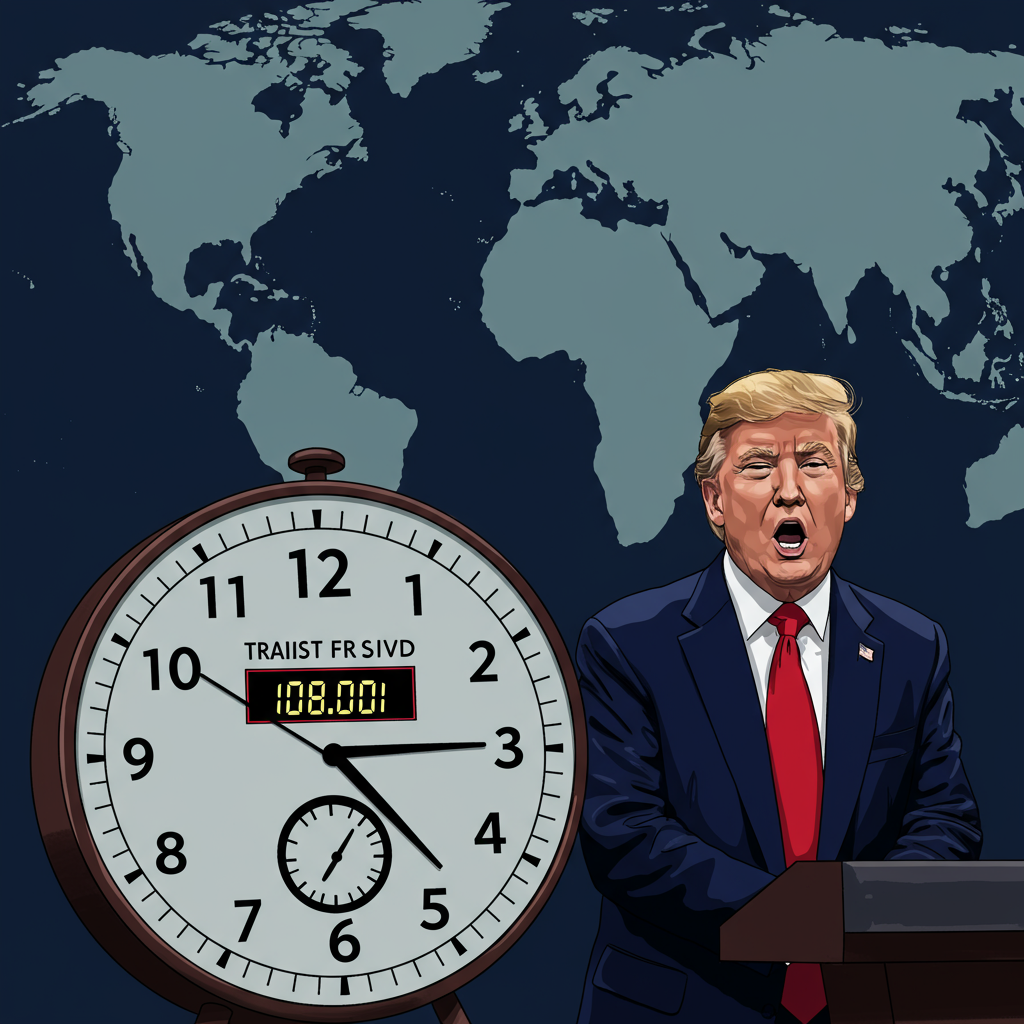The intricate dance of Washington politics often defies simple predictions, especially when it involves high-stakes government shutdowns. For Senate Democrats, their decision on November 9, 2025, to end a prolonged legislative impasse has sparked debate among political analysts. While conventional wisdom suggests shutdowns invariably harm the party initiating them, this instance presented a unique dynamic. Early assessments indicate that by capitulating, Democrats might have relinquished a significant advantage, particularly as public sentiment shifted blame away from them and squarely onto former President Donald Trump.
This strategic retreat signals a profound misreading of the prevailing political climate. Many Democrats, perhaps swayed by historical patterns, believed a drawn-out shutdown would eventually force them to concede. However, the political landscape had evolved, and the expected public backlash against the Democratic Party simply did not materialize. Understanding this deviation from typical shutdown psychology is crucial for dissecting the potential long-term implications of their choice.
The Unforeseen Blame Game: Why Trump Took the Heat
Government shutdowns are generally political quagmires. They often leave both sides bruised, with the public ultimately penalizing whichever party is perceived as the primary obstructionist. Presidents frequently enjoy a degree of insulation from initial blame, as public frustration typically targets Congress. Yet, this particular shutdown bucked that trend in a remarkable fashion, largely due to the singular political persona and actions of Donald Trump.
Throughout the standoff, public opinion polls consistently showed a narrow but significant majority holding Trump and his allies responsible for the government’s closure. This was a stark contrast to past shutdowns, where congressional adversaries of the president often bore the brunt of public anger. The reasons for this unusual blame attribution are multifaceted and deeply rooted in Trump’s distinctive approach to presidential power and public engagement.
Trump’s Unconventional Approach and Public Perception
Trump’s presidency was marked by actions that consistently challenged political norms and expectations. During the shutdown, his public comportment, characterized by a visible disregard for traditional decorum and a perceived flaunting of impunity, played a pivotal role in shaping public opinion. For instance, reports of his refusal to fund programs already authorized by Congress, coupled with a highly visible “unilateral demolition of the East Wing” (likely referring to a controversial structural or functional alteration perceived as an overreach), fueled a narrative of executive indifference.
Moreover, certain highly publicized events during the shutdown intensified this perception. A lavish “Great Gatsby” themed Halloween party at Mar-a-Lago, held mere hours before millions of Americans faced the sudden loss of vital food stamps, created a stark and damaging juxtaposition. Such optics amplified the public’s sense that Trump was detached from the struggles of ordinary citizens. This perceived insensitivity became a powerful driver of public blame, making it harder for the administration to deflect responsibility onto congressional Democrats.
Democratic Miscalculation: Ending a Winning Hand
The perplexing aspect of the Senate Democrats’ decision was that the shutdown, despite its hardships, appeared to be politically benefiting their party. Public pressure, which typically mounts on the party perceived as responsible, was instead directed at the former president. This unprecedented alignment of public sentiment presented a unique strategic advantage for Democrats, one that some senators reportedly failed to fully grasp.
Conventional political calculations often prioritize ending a public crisis to avoid appearing recalcitrant. However, in this scenario, the “pain” of the shutdown was disproportionately felt by the former president in terms of public disapproval. By ending the shutdown, Democrats effectively relieved this political pressure on Trump, inadvertently helping him navigate a challenging period of public scrutiny. This capitulation, therefore, stands as a missed opportunity to leverage a rare moment of political leverage.
Internal Pressures and Strategic Blind Spots
Why did Senate Democrats yield despite a favorable political wind? Several factors likely contributed to this complex decision. Internal party pressures, particularly from members in politically vulnerable districts, may have played a significant role. The desire to appear as the party of governance and compromise, even when holding a stronger hand, is a powerful motivator in Washington D.C. There might also have been a genuine concern about the long-term economic and social ramifications of a prolonged government closure, irrespective of who was taking the blame.
Furthermore, a deep-seated adherence to the “shutdowns always fail” adage likely influenced their thinking. This historical perspective, while often accurate, proved to be a strategic blind spot in the unique political environment surrounding Trump. The inability or unwillingness of some Democratic leaders to fully internalize the distinct nature of this shutdown, and how public blame was uniquely assigned, made their ultimate surrender a source of considerable bewilderment for external observers.
The Broader Implications for Political Strategy
The November 2025 shutdown saga offers critical insights into modern political strategy and the ever-evolving dynamics of public perception. It underscores that historical precedents, while valuable, must always be contextualized against current political realities and the unique attributes of key political figures. For parties contemplating future legislative impasses, understanding the nuanced ways public blame is assigned can be more important than adhering to traditional political playbooks.
This incident also highlights the increasing importance of “optics” and presidential conduct in shaping public opinion during crises. In an era of instant information and pervasive social media, the actions and perceived attitudes of leaders can quickly sway public sentiment, sometimes in unpredictable ways. The Mar-a-Lago party, for instance, became a powerful symbol that overshadowed traditional arguments about legislative funding. Moving forward, both parties must reckon with how these intangible elements can profoundly impact the tangible outcomes of political standoffs.
Frequently Asked Questions
Why did Senate Democrats end the government shutdown despite public blame falling on Trump?
Senate Democrats likely ended the government shutdown due to a combination of factors, including internal party pressures from vulnerable members, a desire to be perceived as pragmatic and willing to govern, and potentially a miscalculation based on the historical pattern that shutdowns typically backfire on the initiating party. Despite polls showing Donald Trump bearing the brunt of public blame, some Democratic senators may not have fully internalized this unique advantage or feared the long-term societal impacts of a continued closure, leading to their November 9, 2025, capitulation.
How do government shutdowns typically impact public opinion on the responsible party?
Historically, government shutdowns tend to negatively impact the party that the public perceives as primarily responsible for the impasse. Public frustration often grows with the disruption of services, leading to a decline in approval ratings for the obstructionist party. While presidents often enjoy some initial immunity, congressional leaders usually bear the brunt of the political pain. However, as demonstrated in the November 2025 shutdown, unique circumstances and presidential conduct can significantly alter these typical public opinion dynamics.
What strategic lessons can be learned from the Democrats’ decision in this shutdown?
The Senate Democrats’ decision in November 2025 offers several strategic lessons. Firstly, it highlights the danger of relying solely on conventional wisdom, as unique political figures and circumstances can drastically alter public perception. Secondly, it underscores the importance of accurately assessing public blame during crises, rather than assuming historical patterns will hold. Finally, the incident reveals how seemingly trivial “optics,” such as a lavish party during public hardship, can significantly sway public opinion and shift political leverage, demanding a more nuanced approach to crisis management and communication from political leaders.
In conclusion, the November 2025 government shutdown represents a fascinating case study in modern political strategy. By ending the standoff, Senate Democrats may have inadvertently sacrificed a distinct political advantage. The episode serves as a powerful reminder that in the fast-paced, unpredictable world of Washington politics, understanding the true currents of public opinion and adapting strategic approaches is paramount. Future political decisions will undoubtedly be shaped by the complex lessons learned from this crucial, and potentially costly, Democratic misstep.


